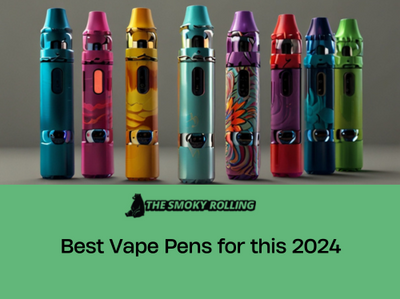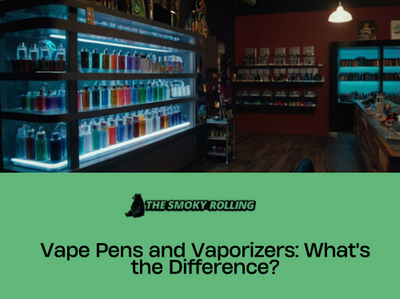The most relevant myths about bongs
Bongs filter out harmful substances
While it is true that bongs do have a water filtration system, this does not mean that they completely eliminate all harmful substances. The water in the bong may help to cool down the smoke and remove some impurities, but it does not remove all of the harmful chemicals present in the smoke.
Bongs make you higher than other smoking methods
While bongs do provide a smoother and cooler smoking experience compared to other methods, such as joints or pipes, they do not necessarily make you higher. The effects of cannabis depend on the strain, potency, and individual tolerance.
Bongs may allow for larger hits and faster delivery of smoke to the lungs, but the high experience is still determined by the quality of the cannabis and how it is consumed.
Bongs are addictive
It is important to note that addiction is a complex issue that can be influenced by various factors, including individual susceptibility and patterns of use.
While bongs may provide a different smoking experience due to the use of water filtration, it is not accurate to state that they are inherently addictive.
Bongs can cause long-term health problems
While bongs are known to provide a stronger high compared to other smoking methods, it is important to note that they can also have long-term health problems. The use of bongs involves inhaling smoke, which can lead to various respiratory issues such as bronchitis and lung damage.
Bongs are illegal
Bongs, which are often used to smoke marijuana or other substances, can indeed cause long-term health problems. The process of smoking through a bong involves inhaling smoke that has been filtered through water, which can lead to the inhalation of harmful toxins and chemicals.
These toxins can irritate the lungs and respiratory system, potentially leading to chronic bronchitis, lung infections, and other respiratory issues. Additionally, the use of bongs to smoke marijuana may be illegal in certain jurisdictions, further emphasizing the potential risks and legal consequences associated with glass bongs and their use.
Bongs are unhealthy
This process does not remove all the harmful substances present in the smoke. Users of water pipes may be exposed to higher levels of tar, toxins, and carcinogens.
Prolonged use of bongs can lead to respiratory issues such as chronic bronchitis, lung infections, and even an increased risk of lung cancer. It is important experienced smokers to be aware of the potential health risks associated with use a bong use more smoke, and make informed decisions about one's smoking habits.
Bongs for beginners should feature a simple design, like a beaker or straight-tube bong with a standard downstem, making it easy for those new to smoking from a bong.
Are difficult to use
The process of using a bong involves inhaling smoke through water, which is meant to cool and filter the smoke before it is inhaled. However, this filtration process is not foolproof and does not eliminate all harmful substances. In fact, bongs can actually increase the concentration of certain toxins and carcinogens in the smoke.
It is very important that you know where to buy your E-nails, check this blog: best online head shops
Produce a harsher smoke
One of the reasons for this is that bongs produce a harsher smoke compared to other smoking methods. When tobacco or cannabis is burned in a bong, the smoke is often inhaled deeply and held in the lungs for a longer period of time. This prolonged exposure to the harsh smoke can irritate the respiratory system and potentially lead to various health issues such as chronic bronchitis, lung damage, and an increased risk of respiratory infections.
Are only to smoke cannabis
When cannabis is smoked through a bong, the smoke is filtered through water before it is inhaled. While this may make the smoke cooler and smoother, it does not eliminate the harmful chemicals and other toxins present in the smoke.
Prolonged and regular use of bongs can lead to various health issues, including respiratory problems, lung damage, and an increased risk of certain cancers. It is important to be aware of the potential risks associated with bong use and to make informed choices about one's health and well-being.
Keeping glass bongs clean is essential for a pleasant smoking experience. Regularly rinse with warm water and use specialized cleaning solutions to prevent residue buildup, ensuring each session provides a smooth and flavorful hit.
Drinking bong water makes you feel high
This myth is not true. Bongwater is the liquid that is used to filter dry heat and cool the smoke produced when using a bong. It primarily consists of water and can sometimes contain traces of ash or resin.
Drinking bong water will not produce any psychoactive effects or make you feel high. In fact, it is not recommended to drink bong water as it can contain harmful substances and bacteria that can be detrimental to your health.
Explore various bong percolation methods, including tree, honeycomb, or showerhead percolators. Each method offers unique benefits such as enhanced filtration and cooling, contributing to a smoother and more enjoyable smoking experience.
The most useful facts about bongs
Bongs do filter out some harmful substances
While it is true that bongs can help filter out some of the toxins from the smoke and larger particles smoother smoke and ash, they do not eliminate all harmful substances from the smoke.
Bongs primarily work by cooling down the smoke, making it smoother and less irritating to inhale. However, the harmful chemicals and toxins present in the smoke still remain and can be harmful to your health.
Bongs do not necessarily make you higher than other smoking methods
This is not necessarily true. While bongs do provide a smoother and cooler smoking experience due to the water filtration system, it does not necessarily result in a more potent high. The level of highness one experiences depends on various factors such as the quality and potency of the substance being smoked, the individual's tolerance, and their method of consumption.
Bongs are legal in most places where cannabis is legal
While the legality of bongs may vary depending on local laws within the jurisdiction, it is important to note that the legality of smoking cannabis itself and its related paraphernalia can differ. In some places where cannabis is legal, the use and possession of bongs may still be restricted or regulated. Therefore, it is essential for individuals to research and understand the specific laws and regulations regarding bongs in their respective locations to avoid any legal complications.
Bongs can be made from a variety of materials
There are many myths surrounding bongs, and one of the most useful myths is that they can be made from a variety of materials. While glass is the most common material used for bongs due to its heat resistance and smoothness, bongs can also be made from ceramic, acrylic, silicone, and even bamboo.
Bongs come in a variety of shapes and sizes
One common myth about bongs is that they are only used for smoking marijuana. While bongs are commonly associated with marijuana use, they can also be used for smoking other substances, such smoking products such smoking cigarettes as tobacco or herbal blends.
Another myth is that bongs are difficult to clean and maintain. While it is true that bongs require regular cleaning to ensure optimal performance, there are simple and effective methods for keeping them clean.

Bongs myths and facts FAQs
What is the truth about the perception that vaping is safer than using a bong?
While it is true that vaping eliminates the harmful effects of combustion that come with smoking a bong, it does not mean that vaping is completely safe. Vaping still involves inhaling chemicals and substances into the lungs, which can have negative health effects.
Is eating raw weed a better way to consume cannabis than smoking a bong?
While both methods have their own benefits and drawbacks, smoking a bong is generally preferred by most cannabis users. When raw weed is ingested, it does not undergo the process of decarboxylation, which is necessary to activate the THC compound and provide the desired psychoactive effects.








